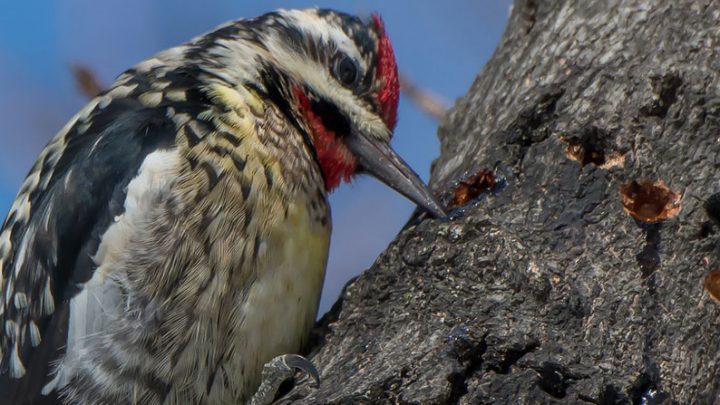A woodpecker is putting rows of holes in my tree. Will it hurt the tree?

Sapsuckers tap for running sap in the springtime, circling a trunk or large limb with their tiny drill holes, and when those wounds heal over, drills a whole new ring of holes. Surprisingly, most trees survive this quite easily, in the same way that maple trees survive humans tapping for syrup. And the sapsucker wells are vitally important for other birds, supplying a reliable source of food for hummingbirds, kinglets, Cape May Warblers, and other species, especially when they’re first returning in spring. We at the Cornell Lab of Ornithology have named the beloved woods about our laboratory Sapsucker Woods, so you just know we’re going to take the birds’ side in this.
That said, there really are some trees that people shouldn’t have to risk losing. If the woodpecker isn’t working too high, the easiest, and usually most effective, way of sending a sapsucker off is to wrap the tree in burlap, over a wide enough section that it doesn’t start a new ring of holes. Many birds are alarmed by bright Mylar balloons filled with helium, which wave about in a way they can’t predict, so tying a few around your tree should provide additional insurance that it doesn’t just start digging in a new place in the same tree. By the time the helium has dissipated, the sapsucker should be long gone.

All About Birds
is a free resource
Available for everyone,
funded by donors like you
American Kestrel by Blair Dudeck / Macaulay Library
